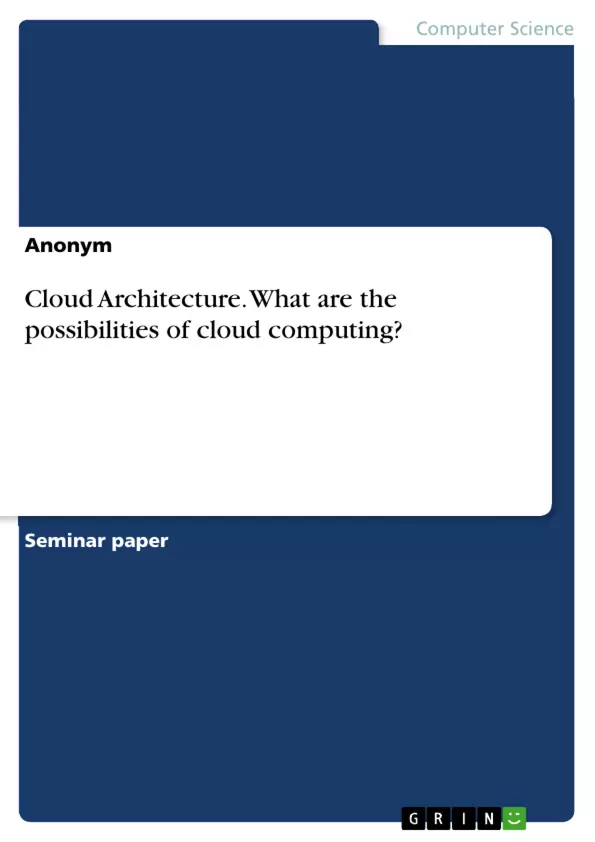This paper is going to explore the possibilities of cloud computing, which effects different cloud architectures have and in which scenarios they are relevant. First, the basics of cloud computing are explained, how it basically works, and what the standard cloud models are. Afterwards different scenarios for cloud computing and their technological architectures are shown. To display how different cloud architectures can be build, the solutions of OpenStack and OpenNebula for creating a cloud infrastructure are introduced and compared to each other. To frame the paper, the topic will be shortly summarized in the end.
The cloud and cloud computing are topics everyone is currently talking about. It is often used as a buzzword in marketing to improve the sales just because it sounds modern. Nevertheless, the cloud is a very important topic in the IT environment nowadays. There are probably still a lot of companies that do not use cloud tools at all or just a small portion of the benefits, simply because they do not know what is possible and what is not possible.
Inhaltsverzeichnis (Table of Contents)
- Introduction
- Basics of Cloud Computing
- Service Models of Cloud Computing
- Public, Private and Hybrid Clouds
- Public Cloud
- Private Cloud
- Hybrid Cloud
- Cloud Technologies
- Virtualization
- VMware ESXi
- Containerization
- Scenarios of Cloud Computing
- Netflix
- Salesforce
- Implementation of a Cloud Architecture
- OpenStack
- OpenNebula
- Comparison
- Basics
- Administration
- Popularity and Distribution
- Architecture
- Hypervisors
- Integration of ESXi
- Comparison
- Integration of Docker
- Conclusion
Zielsetzung und Themenschwerpunkte (Objectives and Key Themes)
This paper explores the possibilities of cloud computing, examining the impact of different cloud architectures and their relevance in various scenarios. It begins by explaining the fundamentals of cloud computing, including its basic mechanisms and standard cloud models. The paper then delves into different scenarios for cloud computing, showcasing their technological architectures. To illustrate how different cloud architectures can be constructed, the solutions of OpenStack and OpenNebula for creating cloud infrastructure are introduced and compared.
- Understanding the Fundamentals of Cloud Computing
- Exploring Different Cloud Architectures and Their Impact
- Analyzing Scenarios for Cloud Computing Applications
- Comparing Cloud Infrastructure Solutions: OpenStack and OpenNebula
- Illustrating the Construction of Different Cloud Architectures
Zusammenfassung der Kapitel (Chapter Summaries)
The introduction lays out the paper's objectives, emphasizing the growing significance of cloud computing in today's IT landscape. The second chapter dives into the basics of cloud computing, defining it as the provision of computing resources at various abstraction levels, often via the internet and a pay-per-use model. This chapter details the three prevalent service models of cloud computing: Software as a Service (SaaS), Platform as a Service (PaaS), and Infrastructure as a Service (IaaS), highlighting their functionalities and examples. The chapter also distinguishes cloud computing systems based on their availability to the public and distribution, specifically focusing on public clouds operated by third-party organizations.
Schlüsselwörter (Keywords)
Cloud computing, cloud architectures, service models, public clouds, OpenStack, OpenNebula, virtualization, containerization, cloud infrastructure, pay-per-use model, Software as a Service (SaaS), Platform as a Service (PaaS), Infrastructure as a Service (IaaS).
- Quote paper
- Anonym (Author), 2019, Cloud Architecture. What are the possibilities of cloud computing?, Munich, GRIN Verlag, https://www.grin.com/document/476745



